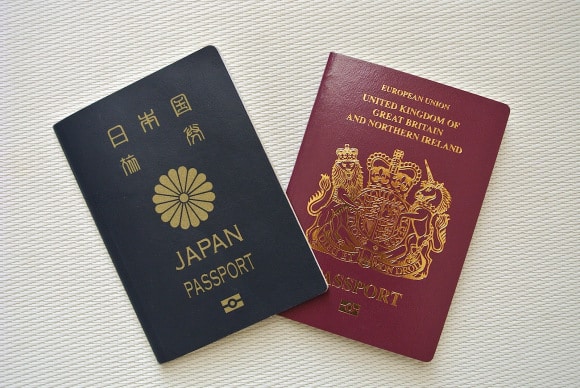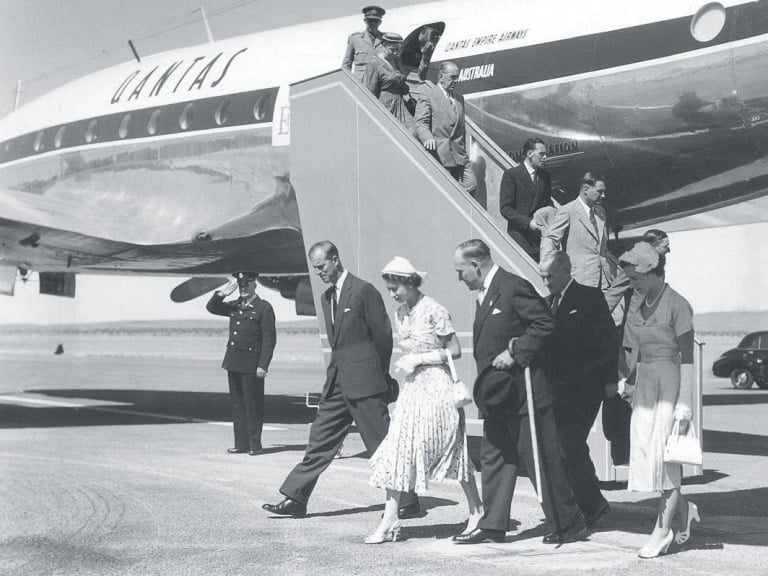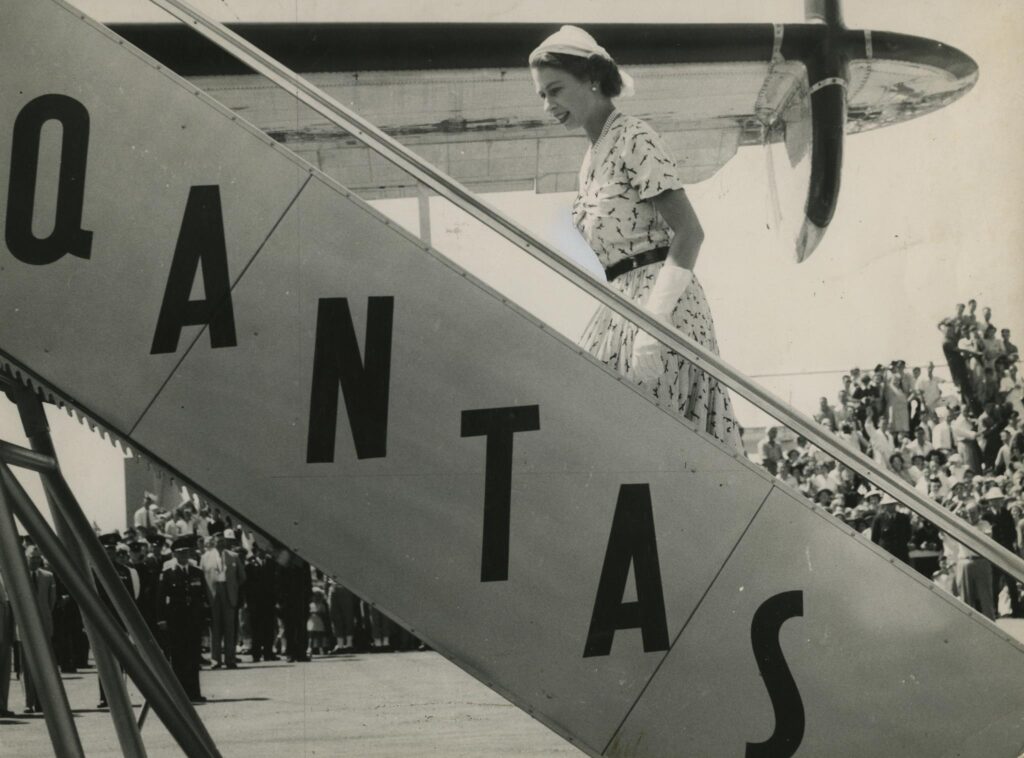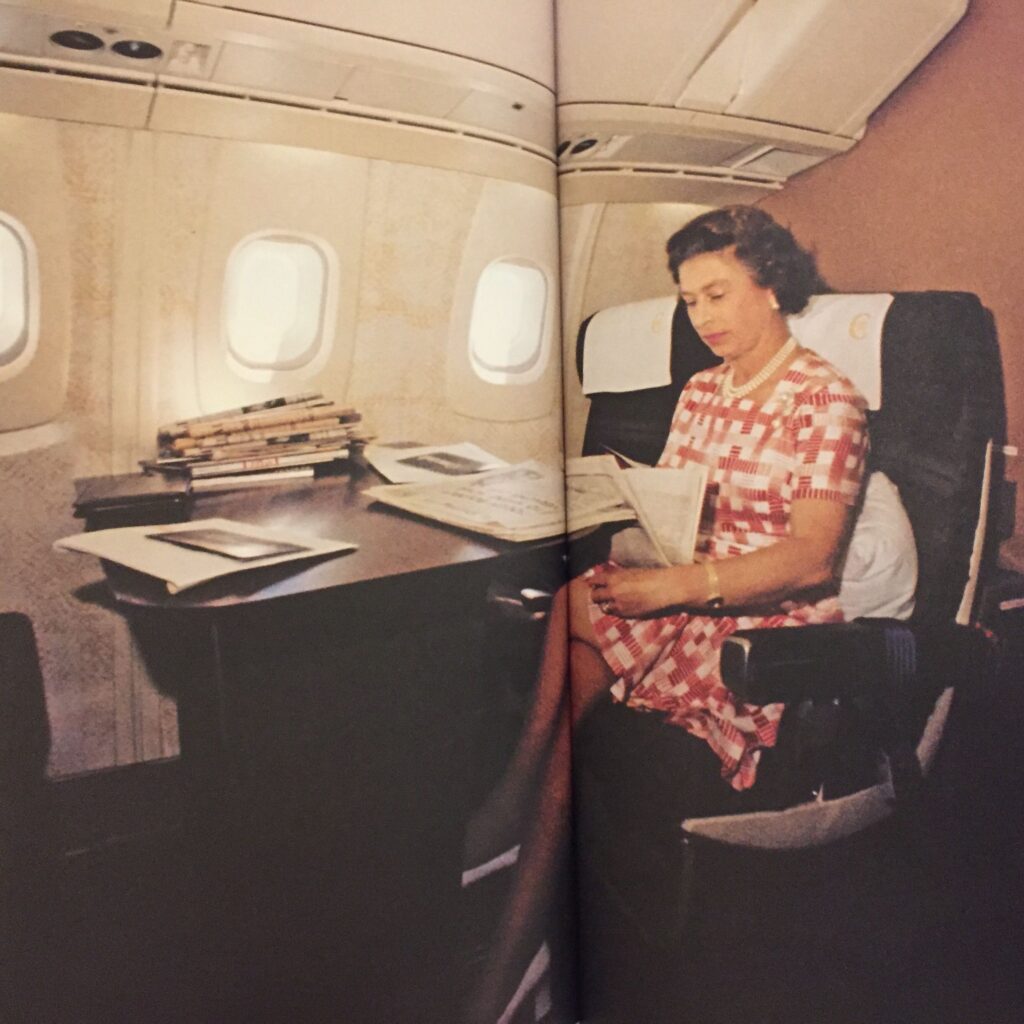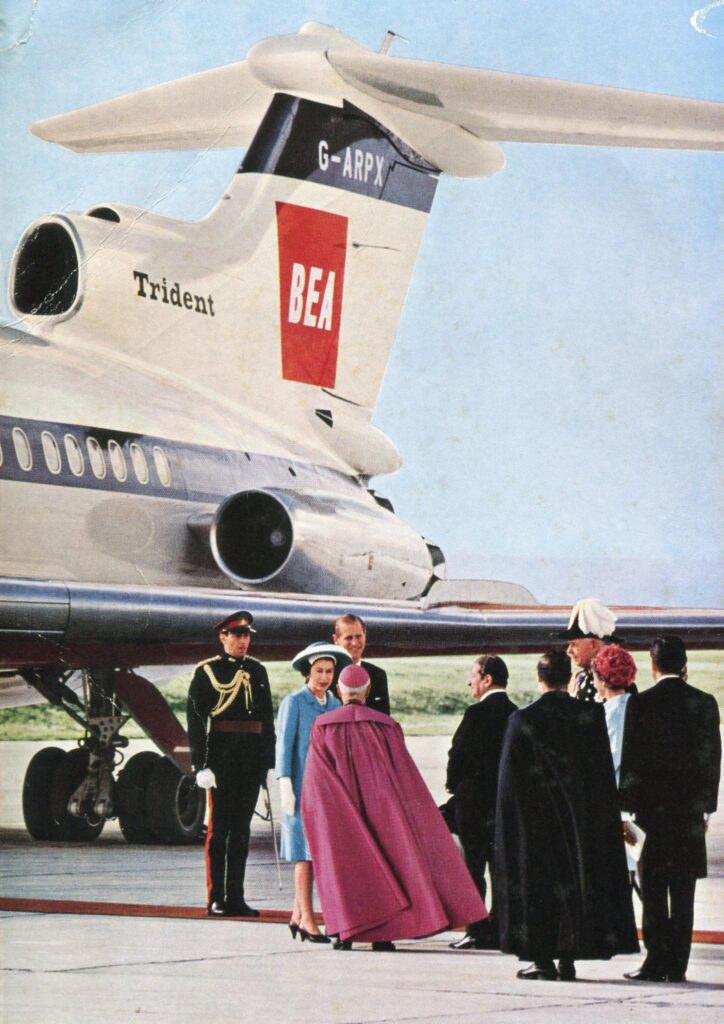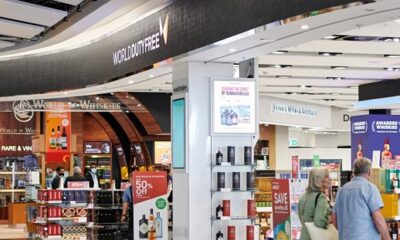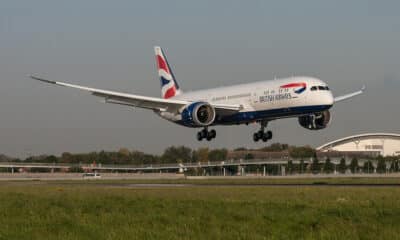Aviation
The Life of Queen Elizabeth Include Several Aviation Milestones
Here are a few of the Aviation adventures of Queen Elizabeth II that are always the most unforgettable for aviation enthusiasts all over the world.
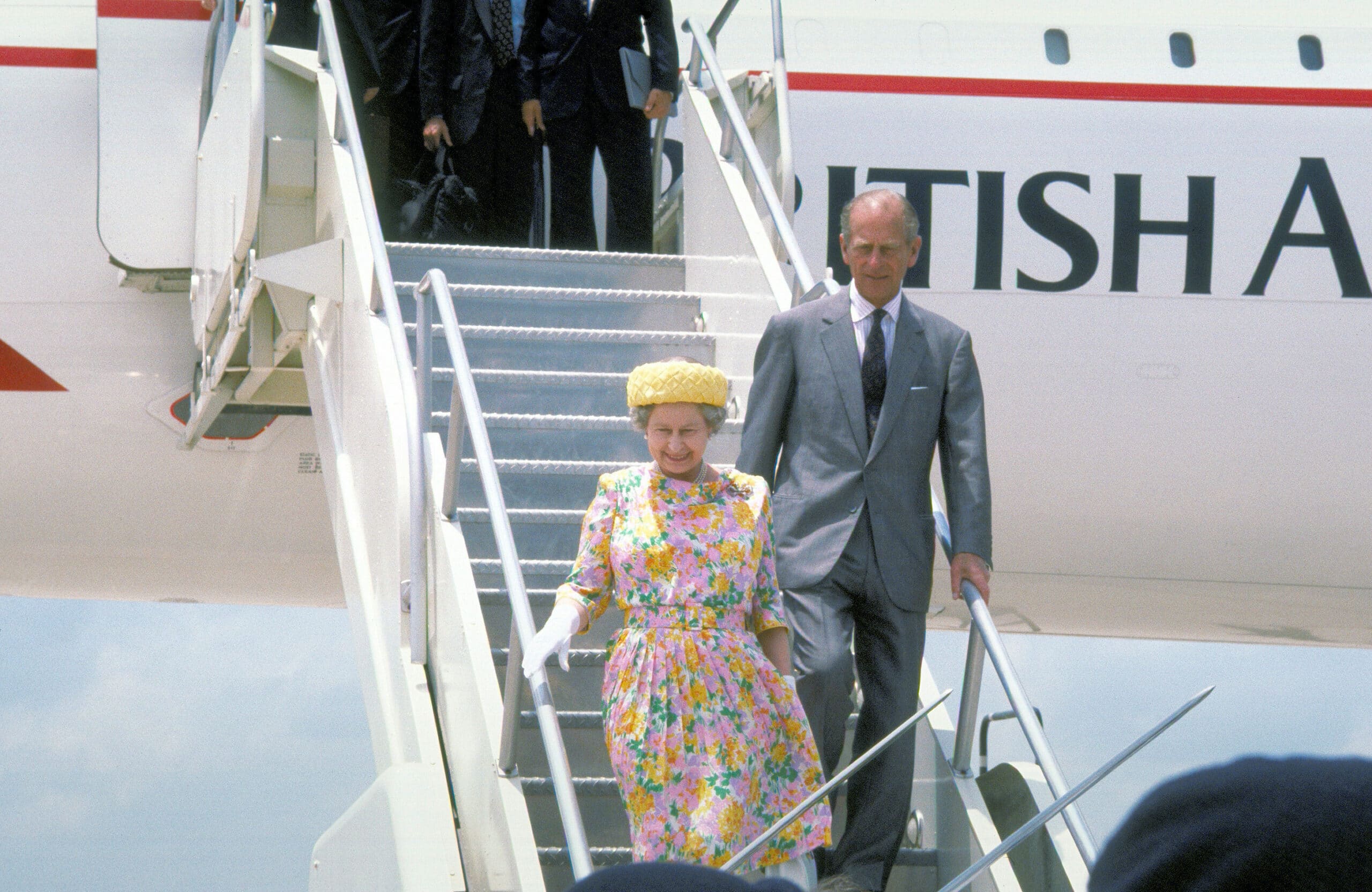
The longest-reigning monarch in British history, Queen Elizabeth II, passed away at the age of 96, leaving behind a legacy that used the media to bridge the gap between the old and the new.
Here are a few of the Aviation adventures of Queen Elizabeth II that are always the most unforgettable for aviation enthusiasts all over the world.
1. The Queen does not need a British passport to travel abroad.
The Queen does not need to own a British passport since they are issued in Her Majesty’s name. The Prince of Wales and The Duke of Edinburgh are two further members of the Royal Family who all possess passports.
The first page of British passports contains a representation of the Royal Arms, together with the following wording: ‘Her Britannic Majesty’s Secretary of State requests and requires in the name of Her Majesty all those whom it may concern to allow the bearer to pass freely without let or hindrance and to afford the bearer such assistance and protection as may be necessary.’
2. In 1954, Her Majesty Queen Elizabeth II was a guest on a Qantas flight.
3. When ‘Her Majesty Queen Elizabeth II visited India
India was visited by Queen Elizabeth three times: in 1961, 1983, and 1997. The most talked-about of her visits was her first one, which took place eight years after her coronation and after nearly 15 years of India’s independence.
President Rajendra Prasad welcomes Queen Elizabeth II of England and her husband Prince Philip, the Duke of Edinburgh, upon their arrival at Delhi’s Palam Airport in January 1961 for a royal trip to India. Source
The Queen visits New Delhi, in 1983
4. How Do the Royals of the United Kingdom Fly?
Strict confidentiality restrictions apply to the crews who have flown with The Queen, however, it is known that the aircraft are modified for The Queen’s usage.
She also rented out military or governmental aircraft, such as the Royal Air Force’s specially modified Airbus A330. The British Prime Minister and other high government officials frequently fly on the aircraft, which has comfortable-looking staggered business class seats with direct aisle access.
She previously chartered Concorde as well as a British Airways Boeing 777 for her trip to Australia for an 11-day visit with the Duke of Edinburgh. Source
QANTAS’ NEW YORK TO SYDNEY NON-STOP RESEARCH FLIGHT SET FOR TAKE-OFF(Opens in a new browser tab)
5. HRH Queen Elizabeth 2 flew a Concorde for the first time in 1977.
Following the Silver Jubilee tour, on November 2, 1977, the Queen took a Concorde flight for the first time from Barbados to Heathrow, as shown in the image below.
There was a 3-hour, 42-minute flight. In February 1979, the Queen travelled extensively throughout the Middle East on Concorde.
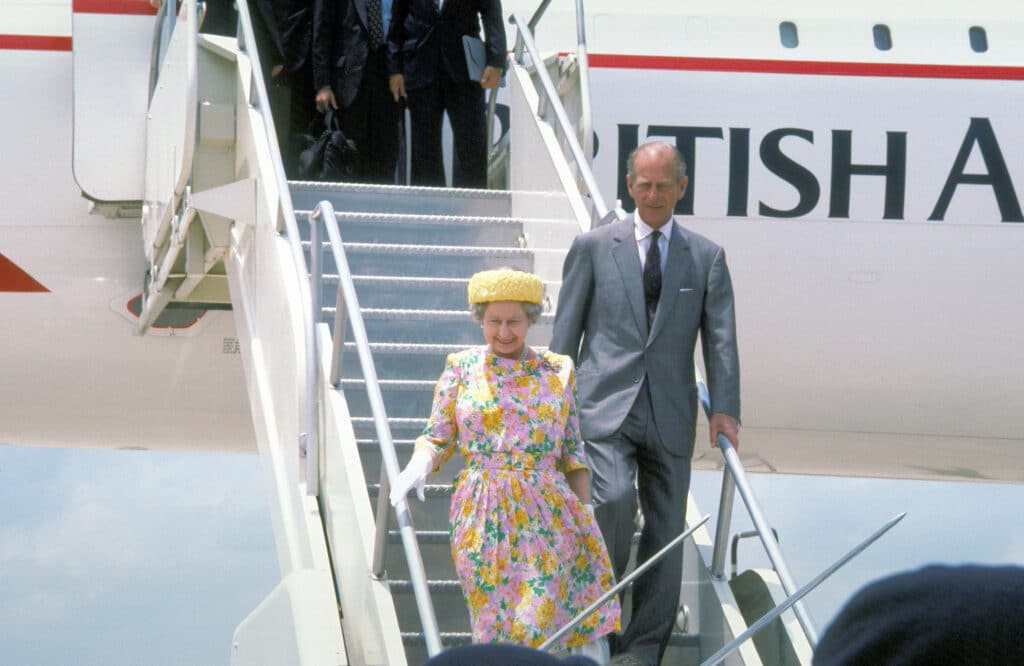
England’s Queen Elizabeth II and her husband, Prince Philip, Duke of Edinburgh, disembark from a British Airways Concorde supersonic transport aircraft upon their arrival for a royal visit.

Her Majesty The Queen, Concorde G-BOAE, Barbados – London Heathrow, 2 November 1977 (Image Credit: British Airways)
6. The Queen frequently took Qantas flights on her official visits to Australia.

Courtesy: Qantas
The Queen defied convention once more in 1995 when she travelled to New Zealand on an ordinary commercial airline for an official 10-day tour. She took the Boeing 747-400, Air New Zealand’s own Queen, on NZ1, the company’s flagship flight from London to Auckland via Los Angeles.
7. Aircraft models that the Royal Family have travelled
8. The Queen’s Terminal
Openings of airport terminals. In addition, the Central Terminal Area at London Heathrow, Terminal 1, Terminal 5, and the North Terminal at Gatwick were all formally inaugurated by the Queen in 1955, 1969, and 2008.
Heathrow Terminal 2 is an airport terminal of Heathrow Airport, the primary airport servicing London, United Kingdom. It is commonly referred to as The Queen’s Terminal. Source
#QueenElizabeth #Royalfamily
A statement from His Majesty The King: pic.twitter.com/AnBiyZCher— The Royal Family (@RoyalFamily) September 8, 2022

Aviation
Can Airline Seat Cushions Be Used As Life Jackets?

In the event of an aircraft ditching into water, there’s a common question: Can aircraft seats serve as an alternative to life jackets for flotation? The answer lies in understanding their respective functions.
While seat cushions can provide some buoyancy in water, they are not intended nor certified to function as life jackets. Their primary purpose is to offer cushioning for passengers during flight. On the other hand, life jackets are meticulously engineered to keep individuals afloat in water, equipped with buoyancy materials, secure straps, and reflective elements for visibility. They offer numerous advantages over mere cushions.
While a seat cushion might offer temporary assistance in staying afloat, it’s not a dependable substitute for a proper life jacket during an emergency. It’s crucial to utilize approved safety equipment when near bodies of water. A life jacket, designed to keep a person buoyant for extended periods, offers the rigidity needed for prolonged flotation and allows for easy movement of the arms to navigate effectively.
What fabric is used in aircraft seats?
Seats are meticulously designed to fulfill multiple purposes, ensuring passenger comfort, safety, and protection from unforeseen circumstances like fires and accidents. A typical design incorporates an aluminum frame with blocks of polyurethane foam affixed to it. Additionally, a layer of fire-resistant fabric, such as Kevlar or Nomex, is often applied over this framework, topped with a layer of cloth or leather.
Leather seats, while luxurious, are more expensive compared to traditional cloth seats. The majority of fabrics used in seat upholstery contain at least 90% wool fiber, with the remainder typically consisting of polyamide (nylon). Wool stands out as the primary fiber chosen for commercial airline seating fabric due to its desirable properties and suitability for such applications.
What is the lightest economy seat?
In recent times, airlines have been downsizing seat dimensions to accommodate more passengers, resulting in reduced cushion length and leg space. This contrasts with earlier times when airlines offered more generously cushioned seats and ample amenities.
According to Recaro Seats Company, their SL3710 model represents the lightest economy class seat available, weighing in at a mere 8 kg (17.6 lb.), setting a new standard in aircraft seating.
For individuals weighing more than 350 pounds, fitting into a standard economy-class seat can be a challenge due to the narrower dimensions. Economy seats, also referred to as “coach,” “standard,” or “main cabin” seats, typically range from about 40 to 48 centimeters in width, further emphasizing the need for more accommodating seating options.
Aviation
Does airline food have more salt? Here is the answer.
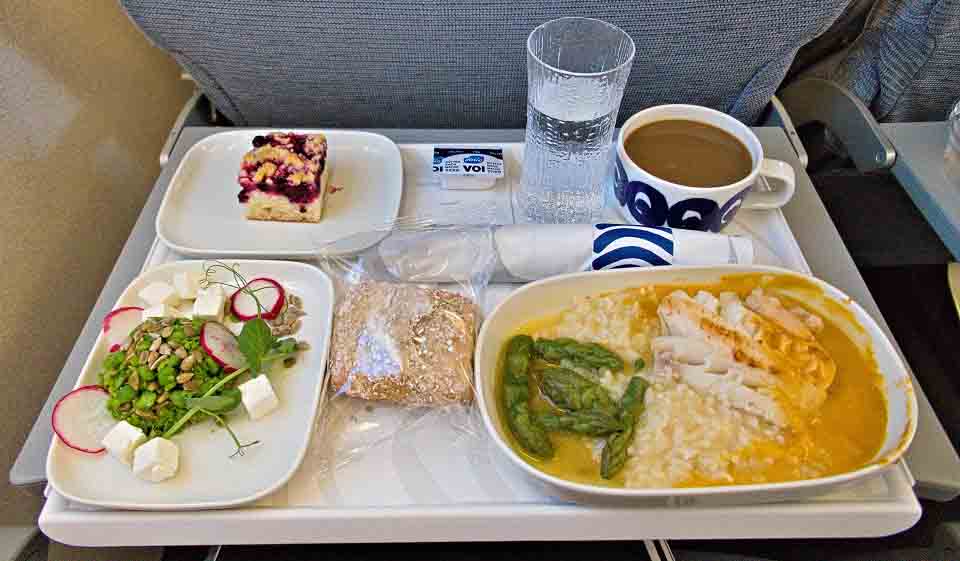
Whenever you fly with an airline, you often notice that the taste of the food is different from what you’re accustomed to on the ground. While passengers sometimes prioritize the food experience, have you ever wondered why airline food tends to be saltier? Let’s delve into this in the video.
Airline food has 15% more salt
One of the main challenges for chefs crafting meals served on airplanes is ensuring they are flavorful for passengers. To achieve this, chefs typically add more salt and seasoning, roughly 15% more salt is used, given that our taste buds are less sensitive by about 30% when we’re airborne.
The Role of Sodium: Sodium is a key ingredient used to enhance flavor, especially in the air where our senses can be dulled. On average, airline meals contain over 800mg of sodium, exceeding 40% of the daily limit recommended by the World Health Organization.
Altitude Alters Perception
Flavors are perceived differently at higher altitudes due to the dry cabin air and low humidity levels, which can diminish our ability to taste and smell. To compensate, airline chefs amp up the salt and seasoning to elevate the food’s taste.
Airline’s food Preservation:
Airline meals are prepared in advance and stored, necessitating longer preservation times. Salt serves as a natural preservative, ensuring the food maintains its quality and safety during storage and transportation.
However, excessive salt intake can pose health risks such as high blood pressure and dehydration, particularly problematic during air travel. Therefore, it’s crucial for airlines to strike a balance between flavor enhancement and maintaining a healthy sodium level in their meals.
An Indian content creator and food analyst discovered that the Indian-based carrier, IndiGo Airlines, incorporates higher levels of salt into its meals compared to standard food practices. According to him, “Many of us are aware that Maggi is high in sodium! What most don’t realize is that IndiGo’s Magic Upma contains 50% more sodium than Maggi, IndiGo’s Poha boasts approximately 83% more sodium than Maggi, and even Daal Chawal matches Maggi’s sodium content.”
Airlines
Why Don’t Airplanes Fly Over the Pacific Ocean?

Flights do indeed fly over the Pacific Ocean, but the routes they take are often determined by factors such as airline policies, air traffic control decisions, and weather conditions. The Pacific Ocean is one of the largest bodies of water on Earth, and it’s regularly crossed by numerous flights traveling between North America, Asia, Australia, and other destinations.
However, some specific routes might avoid flying directly over certain parts of the Pacific Ocean for various reasons. For example:
- Safety and emergency considerations: While modern aircraft are equipped with advanced safety features, airlines, and pilots may prefer routes that keep them closer to potential diversion airports or within range of search and rescue facilities in case of emergencies.
- Air traffic control restrictions: Airspace management authorities may impose certain restrictions or preferred routes for managing air traffic efficiently. These restrictions could be based on factors such as military operations, airspace congestion, or diplomatic considerations.
- Weather conditions: Pilots and airlines consider weather patterns when planning routes. While the Pacific Ocean generally experiences fewer weather-related disruptions compared to other regions, factors like turbulence, thunderstorms, or tropical cyclones can influence route selection.
- Managing Cost Factors: In route planning, airlines have to take fuel prices, maintenance costs, crew charges, and other operating costs into account. Direct routes over the Pacific Ocean may be more cost-effective for shorter distances, but they may also necessitate extra safety precautions, including carrying more fuel for longer overwater operations.
- Remote Locations and Navigational Challenges: The Pacific Ocean’s vastness poses navigational issues, particularly for aircraft operating over isolated regions with few ground-based navigational aids. For precise positioning and route direction, pilots must mostly rely on satellite-based technology and onboard navigation systems, which may necessitate additional training and equipment purchases.
- Lack of Suitable Landing Options in the Pacific Ocean: Unlike regions with dense air traffic and numerous airports, the Pacific Ocean has vast stretches of open water with few suitable landing options in case of emergencies. While long-range aircraft are equipped with safety features like life rafts and emergency locator transmitters, the lack of nearby airports can increase the time it takes for rescue and recovery operations to reach distressed aircraft, posing additional risks to passengers and crew. Therefore, flight routes may be planned to ensure proximity to potential diversion airports or alternate landing sites in case of unforeseen circumstances.

